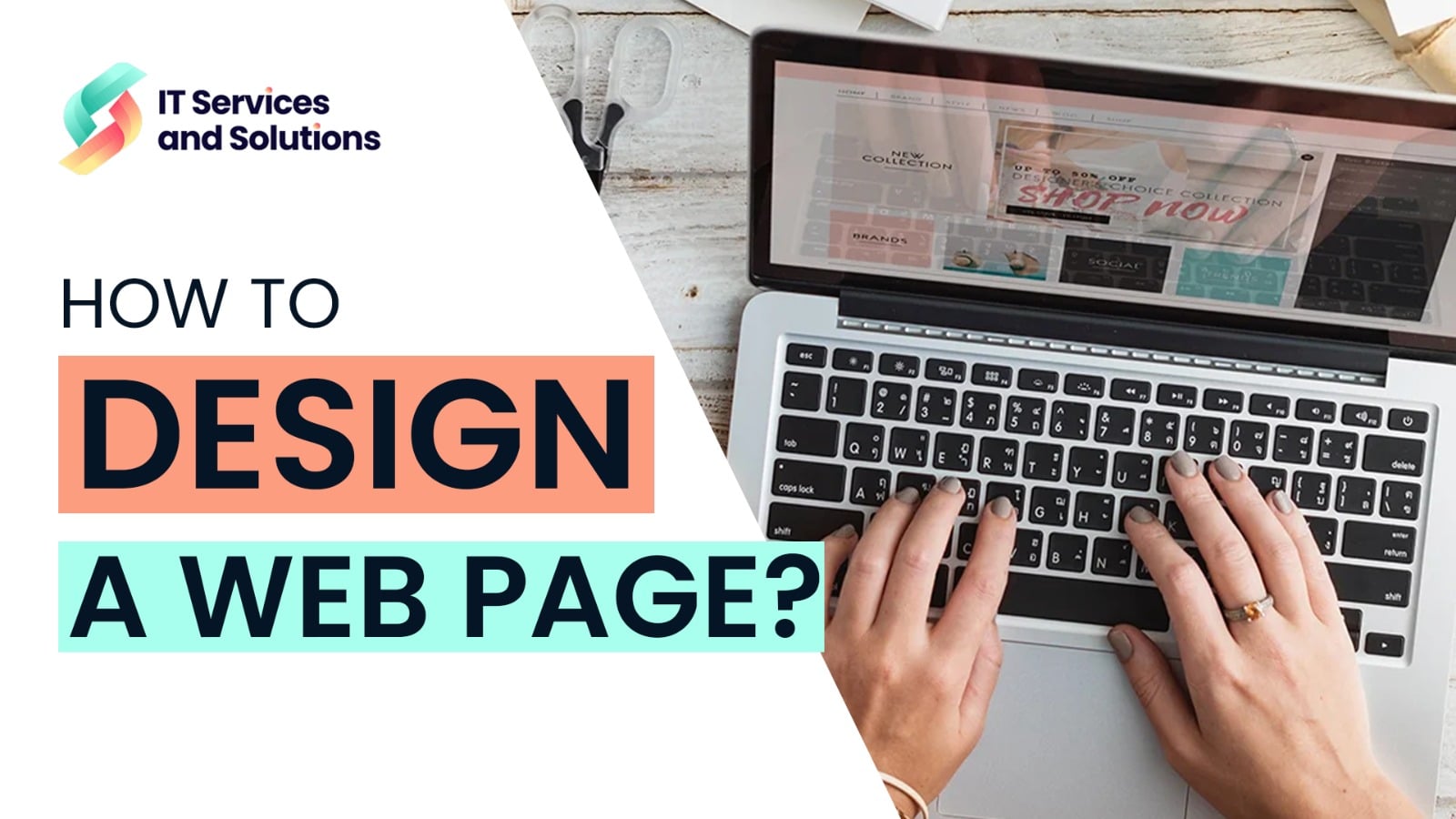Do you want to design a web page that impresses visitors and leaves a positive impression? Designing a web page is more than just arranging elements on a screen; it’s about engaging users, communicating your message effectively, and building a memorable experience.
How to design a web page? Imagine having a web page that effortlessly draws visitors in, keeps them interested, and compels them to explore further. Discover the principles of web design in this article and let your imagination run wild to create a spectacular online presence! Uncover the power of user-centric design, ensuring your website caters to the requirements and preferences of your target market.
How to Design a Web Page?
Designing a web page involves a thoughtful and systematic approach to creating an aesthetically pleasing, user-friendly, and functional website.
1- Define the Goal of your Web Page
Defining the goal of your web page is the foundational step in the web design process. It entails making the core purpose and objectives clear that your website aims to achieve. Without a clear goal, the design and content may lack direction, leading to a confusing user experience. Here’s how to define the goal of your web page:
- Establish clear and measurable objectives that align with your overall business or project goals. These goals can include generating sales, expanding email subscriber numbers, or enhancing user engagement.
- Understand who your intended market is and what they want. Conduct market research to identify their preferences, pain points, and online behaviors. Make sure the purpose of your website reflects their requirements and preferences.
- While defining the immediate goal of your web page is essential, also consider how it fits into your long-term objectives. A well-designed web page should be adaptable to future updates and changes in your business strategy.
2- Do Web Design Research
Conducting research gives you useful information about current trends, consumer preferences, and industry best practices, assisting you in making wise choices during the design phase. Here are some tips for integrating web design research into your workflow.
- Study the websites of your competitors or businesses in a similar industry. Analyze their layouts, user interfaces, content plans, and features.
- Use web analytics tools or conduct surveys to comprehend how website visitors engage in your domain. Examine user behavior, including click patterns, navigational flow, and how long visitors stayed on various pages.
- Look into the significance of mobile responsiveness and the rising number of people using mobile devices to view websites. Make sure your website is mobile-friendly and provides an optimized experience for different screen widths.
- Look into your niche’s best content marketing techniques. Understand what type of content resonates with your target market, such as videos, blogs, infographics, or interactive elements.
3- Choose your Web Page’s Platform
Choosing the right web page platform is an important step in the web design process. The platform you select will serve as the foundation for your website, impacting its functionality, flexibility, ease of use, and overall performance. How to pick the ideal platform for your project is shown here:
- Content Management Systems like WordPress, Joomla, Drupal, and others are popular choices for web page platforms. They provide user-friendly interfaces for managing content, for non-technical users, there are themes and plugins that can be used to maintain the website.
- Select platforms that provide an extensive range of themes, templates, and customization choices.
- Consider platforms that have built-in SEO tools or plugins to help optimize your web page for search engines. SEO is vital for improving visibility and attracting organic traffic.
- Analyze the platform’s cost, taking into account hosting, domain, and any extra plugins or themes you might require. Balance your budget constraints with the features and capabilities required for your web page.
4- Select a Web Page Theme
A key stage in the web design process is choosing a theme for a web page. Your website’s layout, color scheme, typography, and general design will all be influenced by the theme you choose. The best way to choose a web page theme is as follows:
- Keep your web page’s goal in mind when selecting a theme. Different themes serve a variety of functions, such as blog themes for content-driven websites, e-commerce themes for online shops, and portfolio themes for exhibiting work.
- Look for themes that offer customization options. Themes with built-in customization panels or support for page builders allow you to modify the design, layout, and colors without the need for coding.
- The speed of page loading is important for both user experience and SEO. Select a theme that is quick to load and won’t unduly slow down your website.
- Determine your budget for purchasing a theme. Despite the availability of free themes, premium ones often come with more features, better support, and regular updates.
5- Customize your Web Page
One of the most important steps in the web design process is customizing your web page. It enables you to customize your website’s appearance and features to match your brand, your content, and your primary aim for the page. Here are some tips for successfully customizing your website:
- Upload your logo and customize the website’s color scheme to match your brand identity. Consistent branding gives your business a polished appearance and reinforces your brand messaging.
- Customize the font styles and sizes for headings, subheadings, and body text. Pick readable typefaces for your writing and complement your brand’s tone.
- Pay special attention to customizing your homepage, as frequently, it creates the first impression for the visitors of your website. Highlight key content, products, or services on the homepage to grab visitors’ attention.
- Add relevant plugins and widgets to improve the functionality of your web page. For example, you might incorporate social media feeds, contact forms, or email subscription boxes.
6- Test and Launch
Testing and launching your web page are critical final steps in the web design process. These processes guarantee that your website is operational, error-free, and prepared for accessibility by your audience. Here’s how to test and launch your web page:
- Test your web page on different web browsers (e.g., Chrome, Firefox, Safari, Edge) to ensure compatibility. Check that all elements display correctly and that the functionality works consistently across browsers.
- Manually check all internal and external links on your web page to ensure they are functioning correctly. Make sure the site’s structure is logical and clear, and that the navigation menus point to the right pages.
- Create a backup of all website files and databases before launching your website. By doing this, you can assure that your website can be restored if any unforeseen issues during the launch process.
- After the launch, closely monitor your web page’s performance, user behavior, and conversion rates.
Why Choose Us?
At ITSNS, we are passionate about developing outstanding web pages that strengthen your brand and produce real outcomes. With a team of talented designers and developers, we take great satisfaction in delivering cutting-edge, user-centric designs that connect with your target market.
What sets us apart is our unwavering commitment to quality, innovation, and customer satisfaction. Throughout the design process, we collaborate closely with you to make sure that every pixel accurately represents your brand’s objectives and personality. Contact us today and experience the power of a well-crafted web page that not only attracts people but also turns them into devoted clients.

